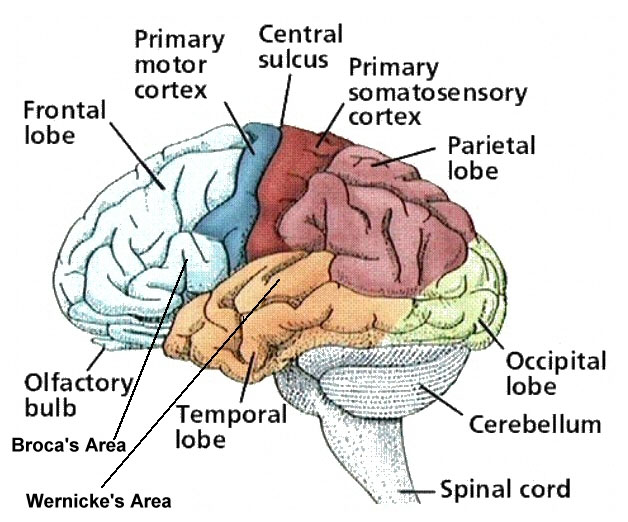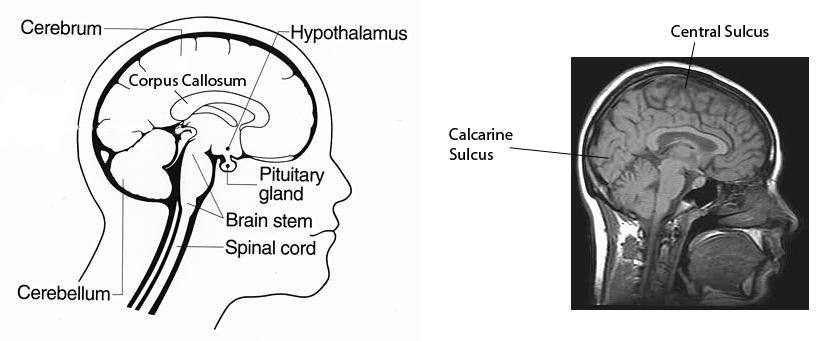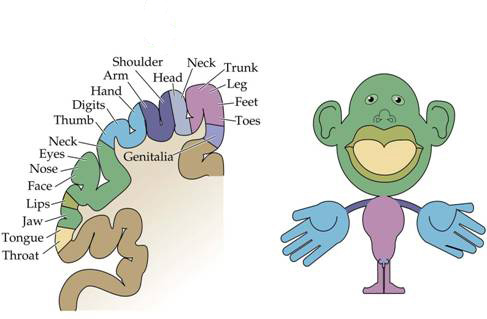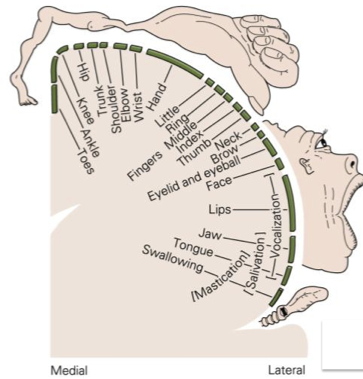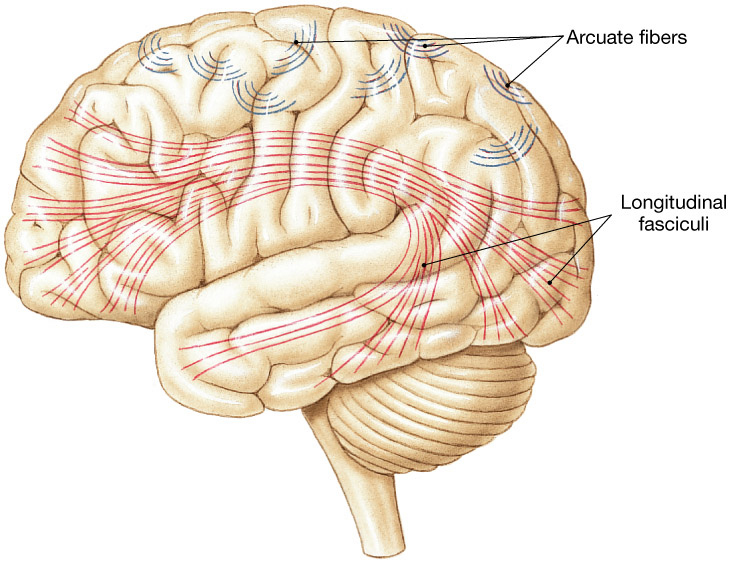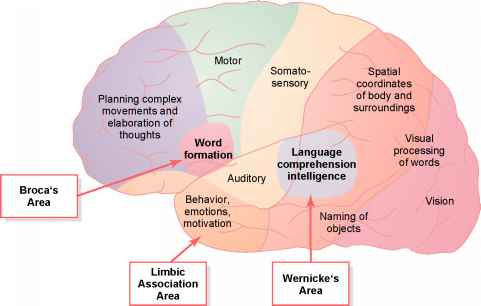The Human Brain
Functions of the Cerebral Cortex
| The Cerebral Hemispheres |
|---|
1. The cerebral hemispheres are solid structures, surrounding the cerebral ventricles that contain cerebrospinal fluid. The outside of each hemisphere is covered by a layer of cerebral cortex, about 4 mm thick, which is gray in colour due to the high density of neuronal cell bodies. The inside of each hemisphere consists of white matter - nerve fibres that run between different areas of the cortex, and connect with large nuclei in the middle of each hemisphere; the two largest nuclear masses are the basal ganglia and the thalamus. |
| 2. The surface of each hemisphere has lots of grooves - sulci - that allow the cortex to be folded and increased in surface area.
Between the sulci are the gyri: each gyrus is on the surface of the brain |
| 3.
The cortex is continuous and covers the surface of the gyri and the depths of the sulci; and on the medial and inferior surfaces of the hemispheres as well as the visible surface. The two hemispheres are connected by an enormous band of axons called the corpus callosum |
| Lobes of the Cerebral Cortex |
|---|
1. The central sulcus (sulcus=groove) separates the frontal lobe from the parietal lobe.
|
| 2. The frontal lobe is concerned with thinking, planning and attention. |
| 3.The occipital lobe is concerned with vision and visual processing. The primary visual cortex is on the medial side of the occipital lobe, surrounding the calcarine fissure. Other areas are concerned with processing of images for colour, movement, etc. |
| 4.The parietal lobe is concerned with the integration of somatosensory and visual functions; the awareness of the 3 dimensional coordinates of the surroundings of the body, and the position of limbs in that space depend on this area of association cortex. Hand-eye coordination depends on this area. Damage of this area causes astereognosis - the failure to identify or recognize objects by touch in the absence of visual or auditory inputs. Some people with damage to the parietal lobe also show neglect of the contralateral side of the body, and fail to clean or dress it. |
| 5. The temporal lobe is concerned with hearing, understanding speech, emotion and memory. Wernicke's area is adjacent to the primary auditory receiving area and is concerned with the understanding of speech. |
6.Broca's area is in the frontal lobe, adjacent to the primary motor area that controls muscles of the face and larynx, and is concerned with speech. |
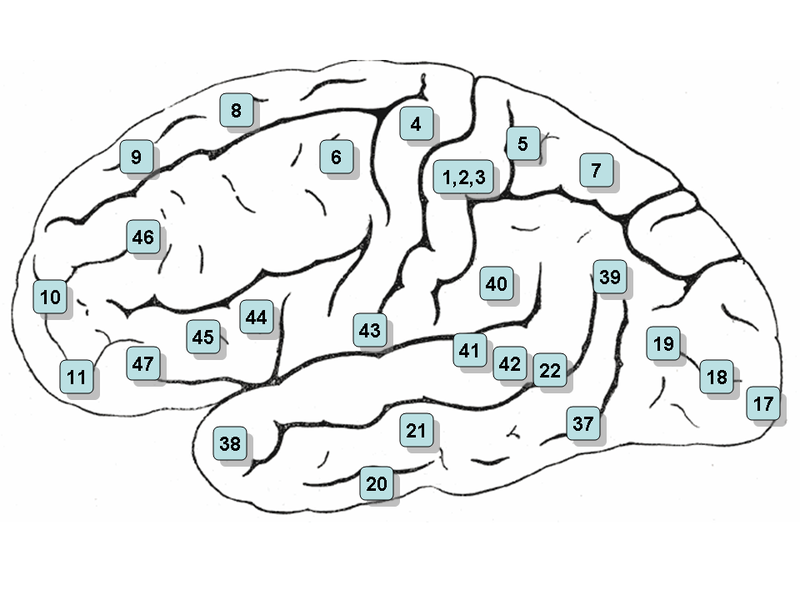
An anatomist, Brodmann, divided the cortex into different areas based on the differences in cellular structure.
Brodmann's areas 1,2 and 3 correspond to the primary somatosensory receiving area and area 4 is the motor cortex.
Area 6 consists of the pre-motor cortex and supplementary motor area (M2), and areas 17, 18 and 19 are concerned with different aspects of visual processing.
